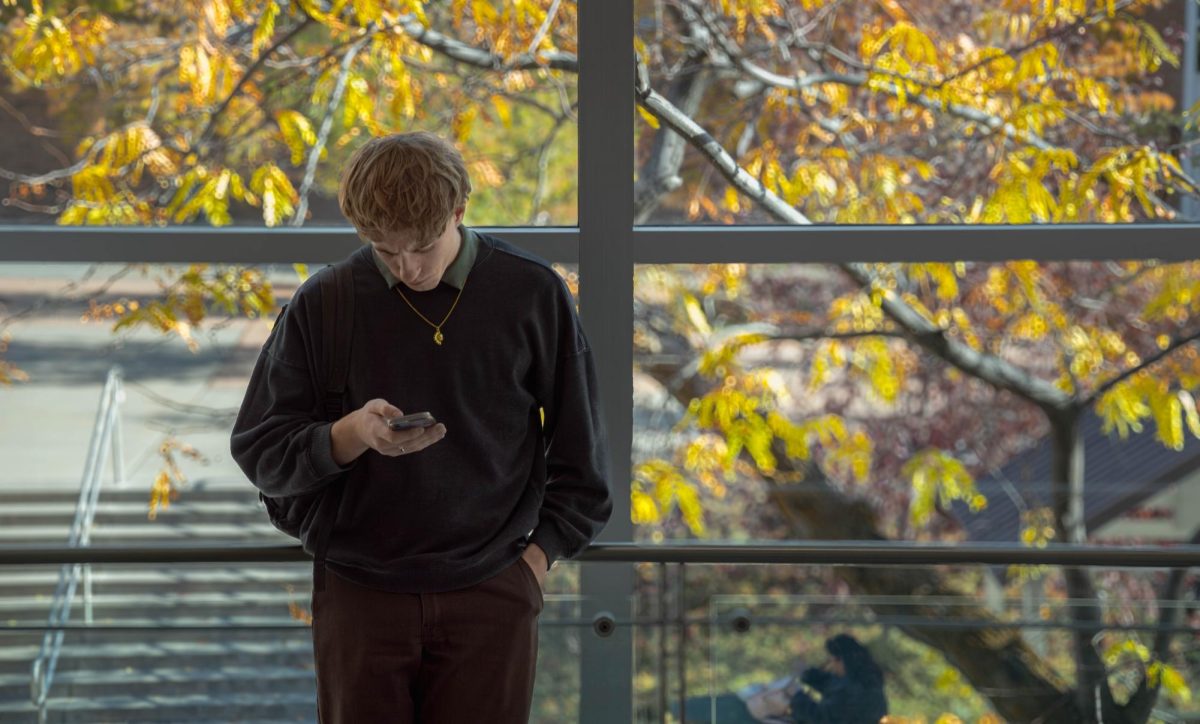Weber State University plans to modify its Financial Aid standards, the majority of which will impact current students. Naturally, many students have strong opinions about the changes.
One of the areas of deepest concern is a change lowering the tuition caps from 150 percent to 125 percent. This loss of income for current students can have detrimental effects.
Many students, especially those who participate in student government, on the Weber State Debate team or in other co-curriculars supported by the school, will be heavily impacted by the lower cap. Traditionally, the extra 50 percent refund served as supplemental income to buy school supplies and living expenses.
“I have a negative opinion about the changes because it negatively affects students who earned scholarships to pay for their schooling,” one sophomore who requested anonymity said. “I do agree that it would be a secure way to not overpay students, but since they earned it, I feel they should still be refunded their scholarship award amount.”
Students who participate in university-sponsored clubs and organizations often receive activity waivers or scholarships as incentives. For those students, that money helped provide the means to work fewer hours, so they could actively participate in extracurriculars.
However, it’s not just students in university-sponsored organizations who may feel the effects of the change. A large percentage of students attending WSU are non-traditional students — that is, students who are married, have children or are 25 and older. Nontraditional students often rely on scholarships or grants like Pell Grants to help cover
tuition.
“My husband and I are both in school, and we depend on Pell Grants and scholarships to pay for our tuition,” nontraditional student Emily Rich said. “Pell Grants cover the tuition adequately, but I rely wholly on scholarships in order to pay for the other expenses that come with college, like textbooks and parking.”
Students who come from struggling families and who have a hard time paying for college often rely on Pell Grants and leftover funds from the school and the government to pay for their education, especially when their families can’t help pay for college. Lowering the cap restricts their ability to make a difficult situation work.
“The only reason I am able to attend college is because of my Pell Grant,” student Sophia Cole said. “My mom is struggling to make ends meet while she goes to school, works and cares for my brother, sister and I. This semester, I had leftover funds, which I am saving for next semester to use them for my classes.”
Rich noted that with the lowered cap and corresponding lowered reimbursement check, it may simply dissuade students from applying for scholarships.
According to 2015 data from the U.S. Census Bureau, 65.7 percent of Utah students already work while attending college, the third-highest percentage in the U.S. Public university students also tend to work more than private university students.
Mother of four Lindsay Reed said she has to work as many hours as she can while still attending school full time to maintain grant and scholarship requirements, which has placed a large financial burden on her family. She feels like there are no other options.
“The schedules for classes at Weber are not very flexible in their options as students get farther in their upper-division courses. I have to cut my hours down at work in order to accommodate and graduate timely,” Reed said.
Reed said under no circumstances does she feel like students are abusing the over-capping system.
“I can buy all of my school supplies and be able to make a month’s house payment, electric bill, etc.,” Reed said. “It is not a case of abusing this money — it is what makes it possible to get a degree and make my life better for myself and my children.”
Of course, with such a high working population in the student body, all working students could feel the extra financial burden.
“Lowered caps will limit my ability to go to school full-time,” student Mikaela Call said. “With the new scholarship stacking plan, I may have to get a full-time job and cut back on my credits at school, ultimately lengthening my college career. I need my leftover FAFSA money in order to continue to live in Ogden and further my education.”
Many of the students who told their stories to The Signpost questioned the benefits of the policy change and who the change would benefit.
“As someone who lives below the poverty line, the importance of that check I receive each semester is significant to my success as a student and the burden it relieves for my family,” said one student who holds a staff position in the university and asked to remain anonymous. “Because I filled out all the documentation needed and was awarded a Federal Pell Grant, explain to me how Weber State University has the right to redistribute these funds granted to me and my children?”
The Board of Trustees and the President’s Council have all supported the restructuring, as has the Faculty Senate.
Faculty Senate Chair Dr. Doris Geide-Stevenson shared her thoughts on and support of the restructuring.
“Based on the presentation by the Provost’s office to the Executive Committee of the faculty senate, the goal of a new scholarship structure is to make sure that new, incoming students feel more confident in being able to pay for four years of college,” Geide-Stevenson said
Geide-Stevenson said the proposed changes would apply to new, incoming students only, and as far as she knew, the changes should not have any impact on students who are currently at Weber State.
As mentioned in the a previous Signpost article on these changes, the University enlisted Ruffalo Noel Levitz as a consultant company on how to improve enrollment numbers. These changes were implemented based on their suggestions.
Part of the impetus for the changes comes from legislative funding, which is based on enrollment numbers.
“We have realized over the last couple of years that our funding model for the institution is not keeping up,” Provost Madonne Miner said. “The legislature does try to reward us when we are able to graduate students in certain areas that they think of as particularly needy with respect to jobs.”
Miner noted that, as of late, WSU has been flat or on the decline regarding
enrollment.
Remaining competitive with other institutions is important for WSU, and with stagnating enrollment rates, students need to be brought in and retained for the school to keep its funding. Part of the changes include extending scholarships to four-year awards, which ideally will boost retention.
Miner said for the four-year scholarships, they had to determine a hard start, which was set fall 2018. This means current students will not have access to the four-year awards but continue to have access to the old scholarships, grants and waivers.
Eventually, the university plans to remove over-capping entirely and cap at 100 percent. Originally, the plan was set for next year to implement the 100 percent cap, but they recently walked back on that decision.
“I know that it’s going to hurt some of those students because this year we capped at 125, and we did decide that next year we are going to cap at 125 again,” Miner said. “Doing the cap at 125 next year will cost the institution about 100 million dollars.”
However, Miner said ultimately the math shakes out, and the system is meant to save the institution dollars. She noted that there are still ways to get over that 100 percent.
“This allows students to get above 100 percent if the Academic Award and Pell Grant combined go over the cap,” Miner said. “It is still possible for students to get other funds from the institution to get to 100 percent of tuition.”
Pushing back the start of the 100 percent cap gives the university time to address the concerns of students and organizations, especially those concerning to student government.
“The NCAA governs all athletic waivers, and those will not change at all,” Miner said. “Fortunately, or unfortunately, the NCAA does not govern other activity waivers, so right now, we have a system where activity waivers have been awarded via an application to the scholarship committee.”
Miner said the activity waivers are folded into the system, which may make it more difficult for students with waivers to find support in the future.
“The students may be nominated for institutionally-controlled funds, but it is not guaranteed like how it used to be,”
Miner said.
The restructuring looms ahead, with lowered caps and a new stacking order. New students do receive the benefit of four-year scholarships, and Miner said the university wasn’t trying to single out any one group to be adversely impacted.
“How do you decide which group of students deserves not to work?” Miner said. “Should those waivers being going to student government or others who feel like they’re working too? I think everyone appreciates that there are pain points when you change.”



















